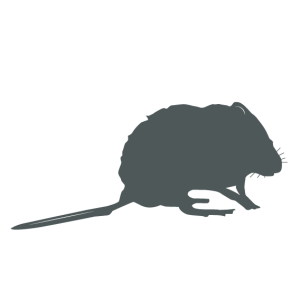

9-13 years
Length: 12-17cm; Tail: 10-15cm; Weight: 140g (Summer), 270g (Winter)
Invasive and Non-Native (INNS); Introduced to the UK at Tring Park from continental Europe in 1902. Listed under Schedule 9 of the Wildlife and Countryside Act, 1981
Edible dormice were first introduced to the UK in 1902 by Walter Rothschild and are now thought to be confined to the Chilterns although populations may also be present in the New Forest, Oxford, Essex and Hampshire. Surveys by the Mammal Society in 2018 predict the number of individuals to be around 23,000.
They are an arboreal, nocturnal species, typically residing in mixed, deciduous woodland in the canopy layer and feeding on the fruits of trees, fungi and beech masts. Individuals hibernate from around October in occupied or unoccupied rabbits burrows or badger dens.
Edible dormouse are often a nuisance for homeowners and frequently attempt to enter dwellings and outbuildings, damaging property particularly in roof voids. Significant damage can also be cause to managed coppices through bark stripping and ring barking as well as consuming fruit crops. Current management involves culling of populations to slow population expansion rate by licence holders. Habitat suitability is seemingly increasing due to climate change.
Most active between June and September.
